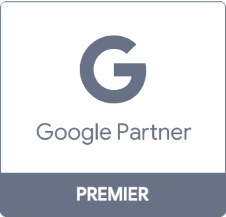12 Ways to Write Effective PPC Ads
Table of Contents
- 1. Write multiple versions of your ad
- 2. Test your ads
- 3. Write concisely
- 4. Use keywords
- 5. Integrate power words into your ad copy
- 6. Appeal to emotion
- 7. Answer questions before they’re asked
- 8. Use symbols
- 9. Use ad extensions
- 10. Highlight your selling points
- 11. Focus on the benefits
- 12. Add calls to action
- WebFX writes great PPC ads
The key to getting the most traffic to your site is writing strong PPC ads. It can be a lot more complicated than it sounds, and it can make the difference between earning and losing a sale.
That means you need to be able to write ads, and you need to write them well. To get the most out of every ad you write, you have to start with the basics.
If you’d like to speak with a specialist about PPC ads, you can reach us at 888-601-5359.
We foster and form long-term partnerships so that your business has long-term results.
Over 90%
1. Write multiple versions of your ad
The first copy of your ad isn’t always going to be your best ad copy. If you want to create the most effective PPC campaign, you must create multiple versions of your ad.
In each version of your ad, you must emphasize the value of your product or services. Tell your audience why they need it and how it will help make their lives better. It’s always great to emphasize the outcome of choosing your product or service.
When you create your ad campaign, you’ll want to experiment with writing different types of ads. This will help you figure out the type of ad your audience responds to the best.
- What’s in it for me ad: One option is to focus on what’s in it for your audience. Your ad copy will focus on showing your audience the value in selecting your product or service. These types of ads are very “you” focused.
- Solving a problem ad: If someone has an issue, your ad content can focus on solving that issue. You provide information that tells them how your product solves their issues, which convinces them to choose your business.
- Creative ad: These ads are an opportunity for you to take a different approach to advertising to try to appeal to your audience uniquely. You can take any number of approaches with these types of ads.
By writing multiple versions of your ad, you’ll find the type of ad that works best for your audience and generates the best results.
2. Test your ads
Testing your ads is a crucial part of PPC advertising. If you want to create the most effective PPC campaign, you must test your ads to ensure that you’re putting out the best ad for your campaign.
There are two types of tests you’ll want to conduct with your ads. The first test is to figure out the right type of ad for your campaign. You can test the types listed above to see which ad drives the best results.
In addition to the type of ad, you’ll want to test different elements on your ad page, too. You can test these individual elements to see if changing them makes a bigger impact on your audience.
There are various elements you can test on your page. This includes the following:
- Heading
- Subheadings
- Body Text
- Imagery
- Call-to-action button
- Color choices
When you test your elements, you’ll want to test each element one at a time. You should only make small changes to ensure that you get pure results. Changing too many elements at a time makes it difficult to know which changes positively or negatively impact your ad’s performance.
3. Write concisely
When you’re writing ads, you don’t have a lot of room to work with. On Google Ads, the standard of PPC, you have 95 characters to use — 25 for the heading and 35 each for the next two lines. For reference, the average sentence is roughly 100 characters long, so you have to make every letter, digit, and space count when you’re writing.
The best way to do this is to research the words that get clicks. One of the best words for that is actually “get” since it’s short, and it has a straight-forward meaning. By using “get” as a template, you can make sure you efficiently and effectively use the space of your ad to get customer traffic.
4. Use keywords
Since you’re targeting specific keywords, you might as well use them in your ad. Google and other PPC outlets highlight related terms and phrases that you have in your ad, which makes them stand out to users. The more you stand out to users, the more likely they’ll be to click your ad.
If you don’t use keywords, you rely on Google’s ability to match someone’s query to a related term that you use in your ad. While that’s not a bad bet, it’s also not a good one. You’re completely at the mercy of Google’s algorithm, and if it doesn’t detect the words that it thinks are relevant, your competitors will stick out more than you.
5. Integrate power words into your ad copy
When you write ad copy for your PPC ad, it isn’t enough to just write words. You don’t want to bore your audience with lackluster ad copy. If you want to see a strong impact with your PPC ad, you’ll want to integrate power words that make your ad copy interesting for your audience.
Power words are words that draw your audience in and get them engaged with your content. The biggest power word you can use is “you.” “You” is an extremely powerful word for getting your audience interested and engaged.
When you use “you,” the focus is on your audience. Your text is directed towards them and speaks to them about their needs. A title that asks, “Are you tired of your leaky faucet?” is more engaging than, “We’re experts at fixing leaky faucets.”
With the first example, you’re speaking directly to your audience and making the focus of your ad on them. The second example focuses more on your business. It’s better to focus on your audience and their needs because it gets them more engaged with your ad.
By integrating power words, you’ll create more dynamic ad copy that gets your audience engaged with your ad.
6. Appeal to emotion
Emotions motivate people. When you appeal to their emotions, they are more likely to act on your ad. Emotions like anger, fear, disgust, and happiness are motivators that get people to act on your page.
Here are the steps you can take to start appealing to your audience better:
- Think about your audience: When you’re trying to appeal to your audience, you must first think about who they are. Are they mothers, fathers, young adults, fitness gurus, or teachers? Think about who is in your audience, so you can create ads that will appeal to those types of people.
- Think about your brand persona: Are you going for a comedic route or a hero route? When you think about the persona you’re taking on, you can create an ad that works best with that persona.
- Write with emotion: Once you have your persona, write with the emotion that embodies that persona. It will help create a more emotionally-driven ad copy.
By appealing to emotion, you’ll get more people to interact with your ad.
7. Answer questions before they’re asked
The mark of a great marketer is anticipating how your audience will react. In this case, you’ll want to answer questions your audience is going to ask before they ask them.
When you look at your ad, think about questions your audience might ask. Here are a few questions you may see:
- How much does your product/service cost?
- What do I get for the price?
- Is there a warranty on the product?
- Are there color options?
- How long does it take to receive the product?
These are common questions that your audience may ask when looking at your PPC page. By answering these questions before you ask them, you can provide your audience with the information they need. When they have all the important information, they’re more likely to convert because they are informed.
8. Use symbols
Letters, numbers, and spaces are recognizable to everyone. That means using them could help you get the engagement that you want from someone who sees your ad.
That’s why symbols are effective additions to PPC ads. Even common symbols, like the registered trademark sign, can draw the attention of a user enough to get them to your site.
When you don’t use symbols, you’re relying on the same letters and digits as everyone else in your industry to get customers. That’s a real challenge, especially since you can’t use anything other than words to do it.
Symbols help break up the monotony. They’re unusual images that grab the attention of any user, even someone who’s just scrolling through search results. They can stop someone right in their tracks, and they’re the perfect ways to show your customers that you’re different from your competition.
9. Use ad extensions
Ad extensions are plugins to your PPC management software that let you add special features to your ad. Those features can be submission forms, additional links, and other items that help attract the attention of your target demographic.
Ad extensions stand out to users because it eliminates a step between them and finding the information that they want. With a normal ad, they have to click the ad and go to a new page that’s completely unknown to them. With ad extensions, they can give you information and immediately know what they’ll find from your ad.
10. Highlight your selling points
PPC is a highly-competitive marketing channel, and that means you have to show that you’re better than your competition. To do that, it’s important that you tell users what makes your product, services, or company unique.
Is it your low prices? Your streamlined services? Your durable products? Regardless of the answer, it needs to be present in the ad that you write.
If you don’t mention your selling point, users simply won’t know why they should buy from you. That means they’ll look to someone else, and you’ll lose a sale to a competitor.
To avoid that, tell them what makes your company better than the others.
11. Focus on the benefits
Whenever you create a PPC ad, it’s significant to focus on the benefits of your products or services. You must show your audience why your business is the best choice and how you’re going to provide them with what they need.
Highlighting the benefits of your product or service is extremely beneficial. You detail for your audience what they will get from choosing your business. It’s a great way to boast about your product in a way that indicates the benefits for them.
Benefits are great selling points, too. They can convince your audience that your product or service is right for them.
12. Add calls to action
Calls to action are essential for getting people to do anything online. In PPC, they’re used to getting people to your site. Calls to action generally start with verbs and instruct a person on what they can do to get what they want.
Using a call to action is hard because of the character limits on PPC ads. Usually, calls to action can be as long as you need in order to get a conversion. But here, they’re restricted to a handful of characters that also need to show information. It’s hard to do, but you need to strike a balance between informing and attracting users when you’re using PPC ads.
WebFX writes great PPC ads
At WebFX, we have an expert team of dedicated PPC specialists and ad writers who know how to get traffic to your website. They’ll create and test all kinds of different ads to determine what words get people to your site and which ones turn them away. And the whole time, you’ll get more customers to your business.
Do you want your company to grow? Contact us today to determine a PPC strategy that’ll work for you!
Table of Contents
- 1. Write multiple versions of your ad
- 2. Test your ads
- 3. Write concisely
- 4. Use keywords
- 5. Integrate power words into your ad copy
- 6. Appeal to emotion
- 7. Answer questions before they’re asked
- 8. Use symbols
- 9. Use ad extensions
- 10. Highlight your selling points
- 11. Focus on the benefits
- 12. Add calls to action
- WebFX writes great PPC ads
Related Resources
- How to Start a Company Blog
- How to Successfully Perform an Online Competitor Analysis
- How to Use Porter’s Five Forces for Marketing
- How to Write a Case Study: 8 Steps for Writing a Case Study
- Inbound Marketing Vs SEO: Which is Better for Your Website?
- Inbound Marketing vs. Outbound Marketing
- Increase Website Traffic
- Internet Marketing FAQs
- Internet Marketing for Rapid Business Growth
- Landing Page Conversion Rates
Marketing Tips for Niche Industries
- Handyman Advertising: 3 Ideas for How to Advertise a Handyman Business
- Healthcare PPC: 7 Hospital Advertising Tips for Your Ads
- How to Get LegitScript Certified: a Step-By-Step Guide for Rehab Centers
- How to Use PPC for Insurance Agencies
- LegitScript Certification for Treatment Centers on Facebook
- LegitScript for Google Ads
- Orthodontist PPC: Pay-Per-Click for Orthodontists
- Paid Search for Physicians: Everything Doctors Need to Know
- Pay-Per-Click Advertising (PPC) for Cabinet Manufacturers: How to Get Started
- PPC for Agriculture
Additional Reading
- Google Ads Vs Facebook Ads: What to Know Before You Advertise
- Google Advertising: What Are Google Ads and How Do They Work?
- Google Remarketing: Create a Remarketing Campaign That Converts
- How Do Search Engines Rank Paid Ads?
- How Does PPC Bidding Work?
- How to Boost Conversion Rates with Remarketing
- How to Choose a PPC Account Manager
- How to Create Effective Bing PPC Ads
- How to Excel at Google Ads Campaign Management
- Most Important KPIS for Google Ads
- PPC Experts
- PPC for Bing
- PPC for Local Business
- PPC for Pennsylvania Companies
- Remarketing Goals











